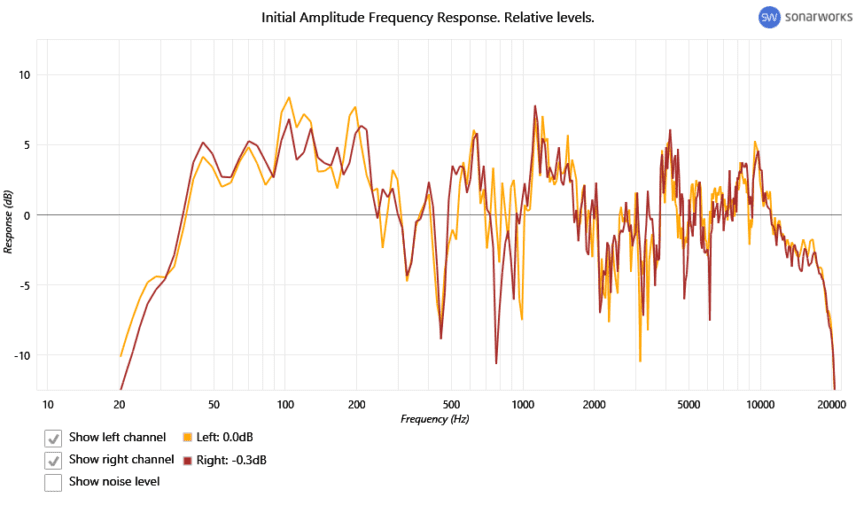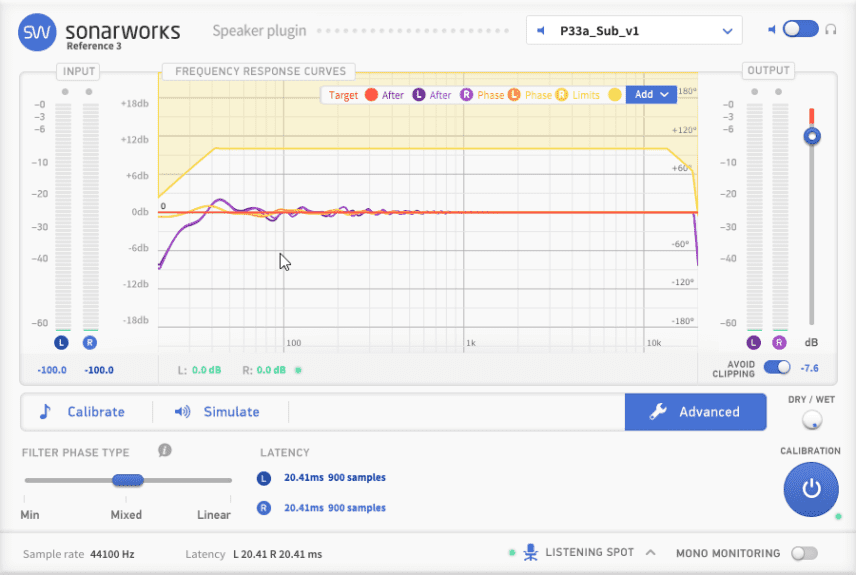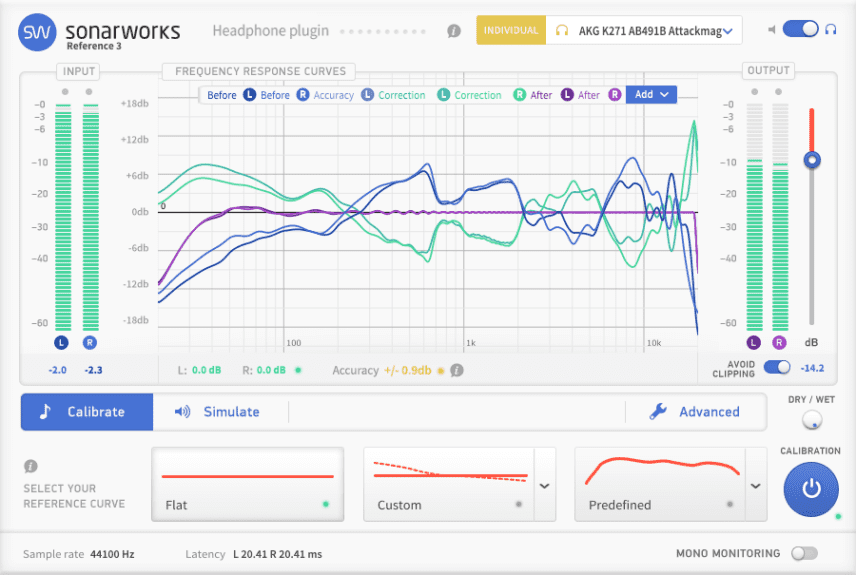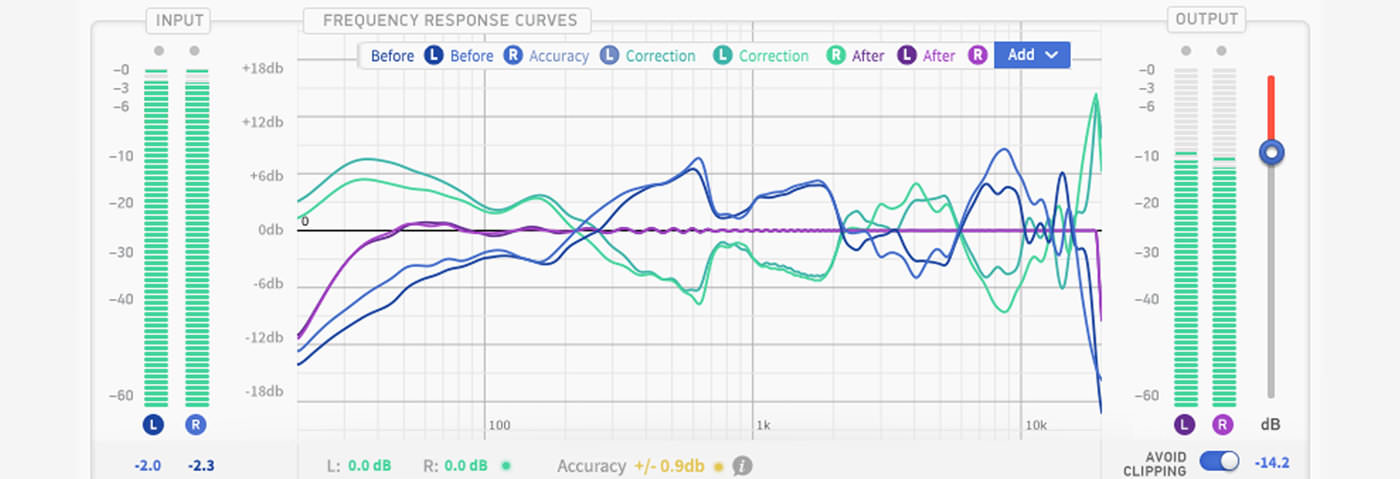The third version of Sonarworks’ calibration software promises to help you get the most out of your monitoring setup. Bruce Aisher puts it to the test.
It’s all too easy to get lured into buying the next great synth, plugin or other piece of tech kit in the vain hope that it’s the missing link to production nirvana. We’ve all fallen prey to this, but sadly it’s often the less immediately glamorous items that can make the most difference. Acoustic treatment and studio monitoring, for many, fall into this latter category. It is true that upgrading the sound in your studio may not appear to deliver immediate dividends in terms of pure creativity, but it can be a game changer for the quality of your mixes – which will, eventually, feed back into the writing process.
The ‘sound’ of your monitoring is, in reality, a combination of both the acoustics of a given space and the speakers you place in that acoustic environment. More specifically, audio accuracy is the degree to which the audio generated in your DAW (or mixing desk) remains unaltered before arriving at your ears. There are many ways in which the perceived sound level at any given frequency can be changed, and even moving your listening position slightly can have an effect – so there is lot that can go wrong.

Frequency response analysis of the reviewer’s monitoring environment before calibration with Reference 3
Theoretically, one way in which things can be improved is with the use of corrective processing in the audio monitoring chain – and this is where Sonarworks‘ Reference 3 comes in. Reference 3 is a two-part software system available for Mac or Windows. The first piece of software is the analysis element, with the second a plugin hosted in your DAW to apply any necessary processing. The analysis software is used with a measurement microphone, and only requires running once (or if any changes occur to your monitoring setup or environment).
The full system comes bundled with a measurement mic and the relevant software registration code. The mic itself is a somewhat generic-looking silver unit (not dissimilar to a number of low-cost measurement mics out there), though each has its serial number printed clearly on the case. This is a clue to one important aspect of the Sonarworks system: microphone calibration. Although modern manufacturing techniques mean that there are only relatively small differences in frequency response between microphones built on the same production line, Sonarworks provide an individual calibration file for each mic they provide. In essence this allows for more accurate results by negating any frequency response anomalies in the microphone. In reality, it is surprising how similar many measurement mics are in their handling of low and mid frequencies, which makes basic demoing of the system cost-free if you have one lying around. However, Sonarworks currently offer a 21-day trial kit that includes a microphone for €49. You get to keep the mic even if the software isn’t for you, and it can be pressed into service as a pretty reasonable instrument microphone if required.
Once you have the mic plugged into a (phantom powered) mic pre-amp, the calibration process itself is fairly straightforward. Sonarworks have put plenty of effort into making this as painless as possible, with clear on-screen instructions and graphics to show where the microphone should be placed at every step. The program emits swept pitch tones, from each speaker in turn, for the tests. To begin with, these establish the working sound pressure level and the distance between each speaker. This is followed by a further series of sweeps from each speaker, analysed from around the chosen listening position. While the software offers some additional options for different listening situations, a conventional single seat near-field monitoring scenario takes no longer than about 15 minutes to capture once you get the hang of things.
Once complete, you are provided with an overview of the results. The software calculates the workable correction frequency range, generates a correction curve and shows the before and after results. Remember that, like any other similar system, Reference does not magically improve your whole room – so if you have a ‘producer’s chair’ and a ‘sofa listening area’, then you’ll need to run through this process for each.
Having saved each analysed position as a separate SW project file (in my compact studio there was only one), you can then proceed to testing the results using the Reference plugin. The plugin (provided in all the main OS X and Windows formats) is loaded across your monitor path and requires you to open the relevant calibration project file from earlier.
It’s important to realise that the processing is intended to be applied only to what comes out of your speakers, and not what is exported during the final mix. Each DAW handles this in a different way, so this may necessitate turning off the plugin on the final bounce. The aim is to improve what you hear in the room, in order to make better mixing decisions – not to change the actual audio mix itself.
While it is possible to load a calibration file and pretty much leave the plugin alone, it is worth at least exploring some of the other features it offers. The central area of the window provides an overview of the various relevant frequency response curves, the most important perhaps being those for the corrective processing and ‘after’ result. There are also options for choosing alternative reference curves (i.e. non-flat) and simulating various models of speaker. Some may find this useful, but for me it somehow distracts from the main aim of the whole thing. The Avoid Clipping switch is a quick and easy way for the plugin to manage any overheating of the gain due to frequency boosts during the correction process.

The Calibrate section, showing choices of reference curve
Of more interest is the Advanced page, where it is possible to define the filter type used in the correction engine. Sadly, there is no way to apply EQ in the real world without some unwanted side-effects, and here you can at least experiment with the trade-off between CPU load, latency and phase response changes. The default Mixed Phase setting is suggested as the best for most situations.

The plugin’s Advanced page, showing the frequency response after processing using the Mixed Phase setting
For those who regularly make music on the move, don’t want to annoy their neighbours or just don’t trust their monitors, Sonarworks have another solution: headphone calibration. This works somewhat differently to the speaker-based system. Clearly, headphones have minimal acoustic interaction with the room in which you are listening. This means that the overall accuracy of their frequency response is determined almost solely by their inherent physical design. With this in mind, it is reasonable to assume that the same make and model of headphones will sound broadly similar when fed the same audio stream. If one could measure the particular frequency response curve for a few examples of the same model then it would be pretty straightforward to create an averaged corrective EQ that would make them (theoretically) flatter. This is exactly what Sonarworks have done. Assuming your model of headphones has been analysed by Sonarworks, then €69 will buy you the Reference 3 Headphone plugin and the averaged calibration file you require for your headphones. If you want a more exact calibration file for your personal headphones, then Sonarworks will (for an €88 fee) create you a custom-made calibration profile. You send them your headphones and a few days later they are posted back with their own specially measured profile.
Sonarworks also sell ready-calibrated headphones, and I managed to check this out with a pair of AKG K271 ‘phones (currently €246, including the plugin). Without calibration, they are a little boxy and lacking in low end, but switching on correction turned them into something much more pleasant to listen to. Most importantly, the mid-range issues were significantly improved, but the lower frequencies also came up in the mix. Overall, the result was huge, and massively for the better. As with the Reference speaker plugin, frequency response is not the sole factor in determining quality of sound, so it didn’t turn these mid-range headphones into high-end studio monitors, but it did make a significant improvement. Switching to the averaged calibration profile for the same headphones resulted in a similarly big sonic change, with subtle, but audible, differences from the custom profile.

Custom calibration curves for AKG K271 headphones
Having been a long time user of IK Multimedia’s ARC System – which works in a broadly similar way – I was keen to make a comparison with the newer Sonarworks system. I configured both using their respective microphones from the same listening position and through the same monitors (with and without a sub). They did deliver different correction curves, and audibly different results. The IK capture process is arguably a little less exacting than that from Sonarworks (and happens to use the mic vertically rather than horizontally). It appears that Reference works on a wider frequency range as far as correction is concerned, and – at least in my case – utilised less corrective gain alteration in places. In particular, this seemed to make for better results than the ARC when the monitors were used without the sub. Reference 3 also offers much more in the way of tweaking and visual feedback.
Overall, the results were very positive. I believe that used correctly, Sonarworks Reference 3 will help improve your monitoring environment, and allow you to deliver mixes that play back well on a wider range of systems. This, of course, goes with the very important caveat that this approach is not a replacement for embracing good monitor placement and appropriate acoustic treatment – there is clearly more to the room sound than frequency response. However, for smaller studios, where effective low-end treatment in particular can be both expensive and less than compact, this is a very useful tool.
The Verdict
Price: From €49
Purchase: Sonarworks Reference 3
The Final Word
Reference 3 will help improve your monitoring environment, and allow you to deliver mixes that play back well on a wider range of systems
